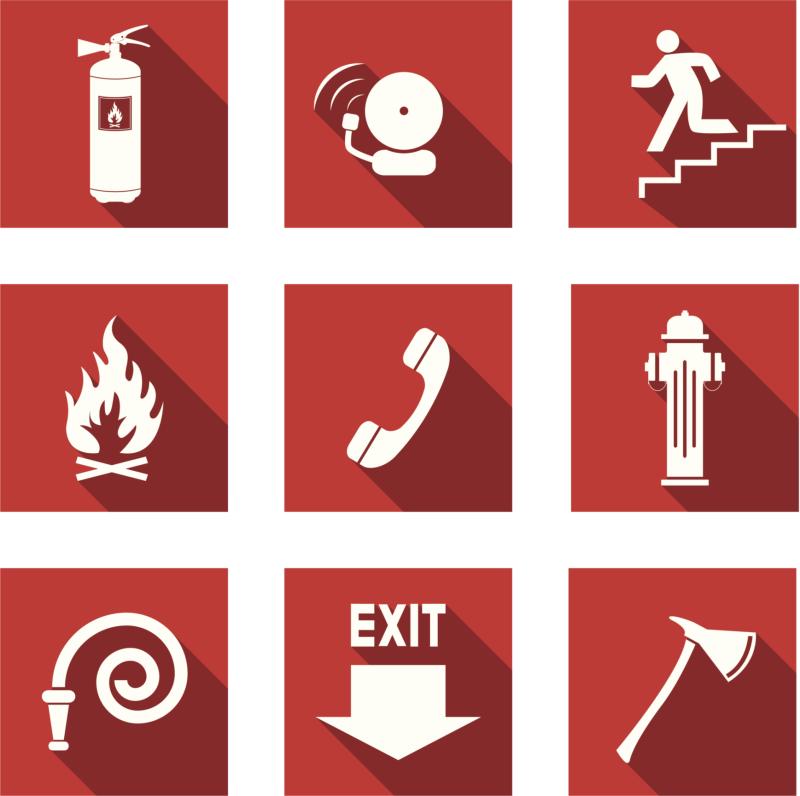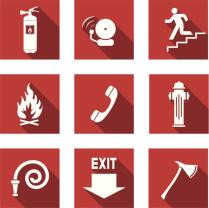What are the fire safety code procedures?
Fire safety code procedures encompass a set of guidelines and protocols designed to prevent, mitigate, and manage fire-related risks within buildings or facilities. These procedures are put in place to ensure the safety of occupants, protect property, and facilitate effective response in case of a fire emergency. Here are some common elements of fire safety code procedures:
Building Codes and Standards: Compliance with local, national, or international building codes that specify fire safety requirements for construction, occupancy, and maintenance of buildings. These codes cover aspects such as fire-resistant materials, exit routes, emergency lighting, and more.
Fire Prevention Measures: Implementation of measures to prevent fires, including regular inspections of electrical systems, heating equipment, and other potential fire hazards. This also includes proper storage and handling of flammable materials and chemicals.
Fire Detection and Alarm Systems: Installation and maintenance of fire detection systems such as smoke detectors, heat detectors, and fire alarms. These systems are designed to provide early warning in case of a fire outbreak.
Emergency Evacuation Plans: Development and communication of clear evacuation procedures that outline escape routes, assembly points, and emergency contacts. These plans should be regularly practiced through drills to ensure occupants are prepared in case of a fire emergency.
Firefighting Equipment and Facilities: Provision and maintenance of firefighting equipment like fire extinguishers, sprinkler systems, fire hoses, and fire hydrants. Regular inspections and testing of this equipment are essential to ensure functionality.
Training and Education: Providing fire safety training to occupants, employees, and staff members to raise awareness about fire hazards, proper use of firefighting equipment, and evacuation procedures.
Accessibility and Clear Signage: Ensuring clear and visible signage for emergency exits, evacuation routes, and fire safety equipment to facilitate easy and swift evacuation during emergencies.
Regular Inspections and Maintenance: Conducting routine inspections and maintenance of fire safety systems and equipment to ensure they remain in good working condition.
Compliance and Enforcement: Monitoring and enforcing compliance with fire safety codes and regulations through inspections and penalties for non-compliance.
These procedures are often tailored to specific building types, occupancies, and industries, and they are crucial for minimizing the risk of fire incidents, ensuring the safety of occupants, and reducing the potential damage caused by fires. They are typically developed in accordance with local fire safety codes and standards and are subject to regular review and updates to ensure their effectiveness.
1. Standard Fire Safety Code Protocols for Buildings
Fire safety codes are a set of regulations designed to minimize the risk of fire and protect occupants in case of a fire. These codes vary from jurisdiction to jurisdiction, but they typically include the following requirements:
Fire Detection and Alarm Systems: Buildings must have fire detection and alarm systems that are installed and maintained in accordance with code requirements. These systems should be able to detect smoke and fire early and sound an alarm to alert occupants and initiate evacuation procedures.
Fire Extinguishers: Buildings must have fire extinguishers of the appropriate type and size located throughout the premises. Fire extinguishers should be easily accessible and readily visible, and occupants should be trained in their proper use.
Egress and Exit Routes: Buildings must have clearly marked egress and exit routes that are free from obstructions and provide a safe and unobstructed path to safety. Exit doors should be easy to open, and exit signage should be visible and well-lit.
Fire Barriers and Compartmentalization: Buildings must be designed and constructed with fire barriers and compartmentalization to prevent the spread of fire. These barriers should be able to withstand the impact of fire for a specified period, preventing it from spreading to other areas of the building.
Fire Sprinkler Systems: Many buildings, especially high-rise structures, are required to have fire sprinkler systems. These systems automatically activate when a fire is detected, spraying water to extinguish or control the fire and protect occupants.
2. Enforcement and Regulation of Fire Safety Code Procedures
Fire safety codes are enforced and regulated by local fire departments or building code enforcement agencies. These agencies conduct regular inspections of buildings to ensure that they comply with fire safety codes. If violations are found, inspectors may issue citations and require the owner or occupant to make necessary corrections.
3. Measures Establishments Can Take to Comply with Fire Safety Codes
Establishments can take the following measures to comply with fire safety codes:
Conduct Regular Fire Safety Inspections: Implement a regular fire safety inspection schedule to identify and address potential hazards.
Provide Fire Safety Training to Employees: Train employees on fire safety procedures, including evacuation routes, the use of fire extinguishers, and fire reporting protocols.
Maintain Fire Detection and Alarm Systems: Regularly test and maintain fire detection and alarm systems to ensure they are in proper working order.
Keep Exit Routes Clear and Unobstructed: Ensure that exit routes are free from clutter and obstructions, and that exit doors are easy to open.
Dispose of Flammable Materials Properly: Store and handle flammable materials in accordance with fire safety codes to minimize the risk of ignition.
Develop and Implement a Fire Safety Plan: Create a comprehensive fire safety plan that outlines procedures for fire prevention, detection, evacuation, and emergency response.
By adhering to these measures and proactively addressing fire safety concerns, establishments can ensure a safe environment for their employees and customers.


